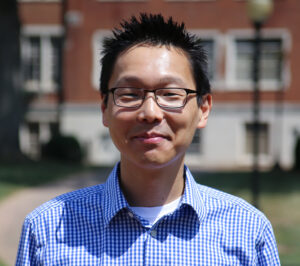
Teaching about the Virgin Birth in a Seminary Classroom with Progressive and Conservative Students
A tense moment in my classroom captured some of the changing dynamics at my seminary. We were learning about the rise of higher criticism within the history of biblical interpretation in the United States. As we were analyzing a lecture that Charles Augustus Briggs delivered at Union Theological Seminary in 1891, some students found Briggs’s honest grappling with factual errors in the Scriptures invigorating and resonated with his push for new interpretive methods distinct from the doctrine of biblical inerrancy. They were surprised and encouraged to encounter a scholar who declared that the “theory of inerrancy” was neither located in the Scriptures nor sanctioned in the ancient Christian creeds. Over one hundred years ago, Briggs excoriated the doctrine of inerrancy as “a ghost of modern evangelicalism to frighten children.”
As I moved our discussion from this primary source to the ecclesial divisions that transpired in Briggs’s denomination (the Presbyterian Church in the U.S.A.) due in no small part to his scholarship, we reflected on how and where we see these ruptures today. In 1909, one presbytery in New York ordained a handful of ministerial candidates who did not affirm a belief in the virgin birth of Jesus Christ. In the following years, Presbyterians vigorously debated whether it was possible to be a Christian without attesting to the virgin birth, Christ’s bodily resurrection, and the actuality of Christ’s miracles as recorded in the Gospels. Some students shared that these divisions persist in their congregations and denominations today. One student wondered aloud if their presbytery would allow a candidate to express a nuanced and complex position on the virgin birth today.
But my classroom was not only buzzing with excitement and collaborative energy; it was also buzzing with trepidation and anger. Some students remained quiet and a few hardly looked away from their notebook computer screens. Finally, one student shared that this was not what they expected to learn at our seminary and that they thought any notion of Christianity without the doctrines of inerrancy and the virgin birth was heretical and dangerous. Another student expressed frustration with the trajectory of our discussion. They thought it was appropriate to learn this history, but how their peers were talking about the Bible deeply troubled them. The student added that conversations like this one were precisely why mainline Protestant congregations were in decline and losing members.
Student populations at my seminary and other PC(USA) schools have shifted in the twenty-first century. In 2000, most of the students at my seminary were white, domestic, and Presbyterian. Since then, there have been large increases in the enrollment of international students and students of color. Black students comprised approximately 4/5 of the incoming class in 2021. There are now fewer Presbyterian students than students from other Christian traditions. In addition to educating students across wider diversities of race, ethnicity, gender identity, sexuality, culture, and national origin, students have a broader range of theological viewpoints.
When my classroom was predominantly Presbyterian, there were certainly differences on matters of biblical interpretation and belief. As the PC(USA) wrestled over the full inclusion of LGBTQIA+ persons, so too did the students in my classroom. But after the denomination made changes in its polity to permit the ordination of LGBTQIA+ pastors and allow ministers and sessions “to use their own discernment to conduct same-gender marriage ceremonies,” the enrollment of PC(USA) students opposed to these changes declined and the number of LGBTQIA+ students grew. These students, along with others seeking creative ways to enact intersectional justice in familiar and new ministries, are enlivening my classroom as they prompt and provoke us to fresh analyses and more expansive understandings of humanity and the divine throughout creation.
The anxieties around this discussion of the virgin birth illustrate another shift. There are more students from theologically conservative, evangelical, and fundamentalist traditions at my seminary today than there were twenty years ago. Some have deliberately chosen to enroll here because they too are yearning to expand their knowledge of God in an open and inclusive learning environment. They relish opportunities to excavate the depths of many theologies and ask the probing questions that they were discouraged from expressing in their churches. Others remain firmly rooted in their traditions and perpetually frustrated. They question why a seminary that is committed to diversity, equity, and inclusion ignores their religious interpretations and cultural perspectives.
As an Asian American with firsthand experience in conservative, evangelical, mainline, and progressive Protestant contexts, I am acutely aware of both the promise and peril of my changing classroom. The increasing diversity presents new possibilities for learning with a student population that more closely represents the breadth of Christianity locally and globally. Both the church and the world are bigger than the denomination to which my seminary belongs. Yet, there are chasms of difference between progressive and conservative Protestants on foundational issues of doctrine and human dignity. It can be difficult to find common ground when some of us stand so far apart from one another.
However, the instruction in classrooms like mine must meet the demands of more complexity with more clarity about learning covenants and pedagogical commitments. My cultivation of a hospitable learning environment distinguishes between welcoming all students and facilitating the public expressions of their private beliefs to uphold my seminary’s intersectional commitment to the flourishing of women, persons of color, and LGBTQIA+ persons in the classroom. It also requires a differentiation between conversion and education. I must continually discern how my students are learning and acknowledge that, for a few, the gaps between their learning expectations and my teaching philosophy will remain significant.
Leave a Reply